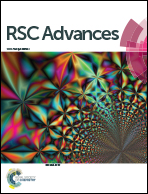Effect of phenolic compounds on the oxidative stability of ground walnuts and almonds
Abstract
Walnuts and almonds are mainly constituted by unsaturated fatty acids and, in consequence, are readily prone to oxidation reactions. These nuts are also rich in antioxidant substances such as polyphenols, which are mainly concentrated in the brown skins (BS) or seed coats. This study analyzes the effect of BS phenolic compounds on the oxidative stability of walnuts and almonds. For this reason, peeled and unpeeled ground nuts were comparatively evaluated after thermal treatments as well as after room temperature storage. Furthermore, volatile compound emission due to thermally induced oxidation of the ground nuts was analyzed using HS-SPME-GC-MS. Several secondary oxidation products were identified in the headspace, and volatile product formation was considerably larger in nuts with BS than in peeled ones. Consistently, the former showed higher malondialdehyde levels after heating which indicates a prooxidant effect of BS presence. In order to verify these findings, a water-in-oil microemulsion was used as a model system to assess the role of nut phenolic compounds on lipid oxidation promotion. The hydroperoxide and malondialdehyde content was determined, as a measurement of primary and secondary oxidation enhancement, respectively. A dose dependent prooxidant effect on linoleic acid thermal oxidation was also observed when BS polyphenolic extracts as well as pure phenolic compounds were added.


 Please wait while we load your content...
Please wait while we load your content...